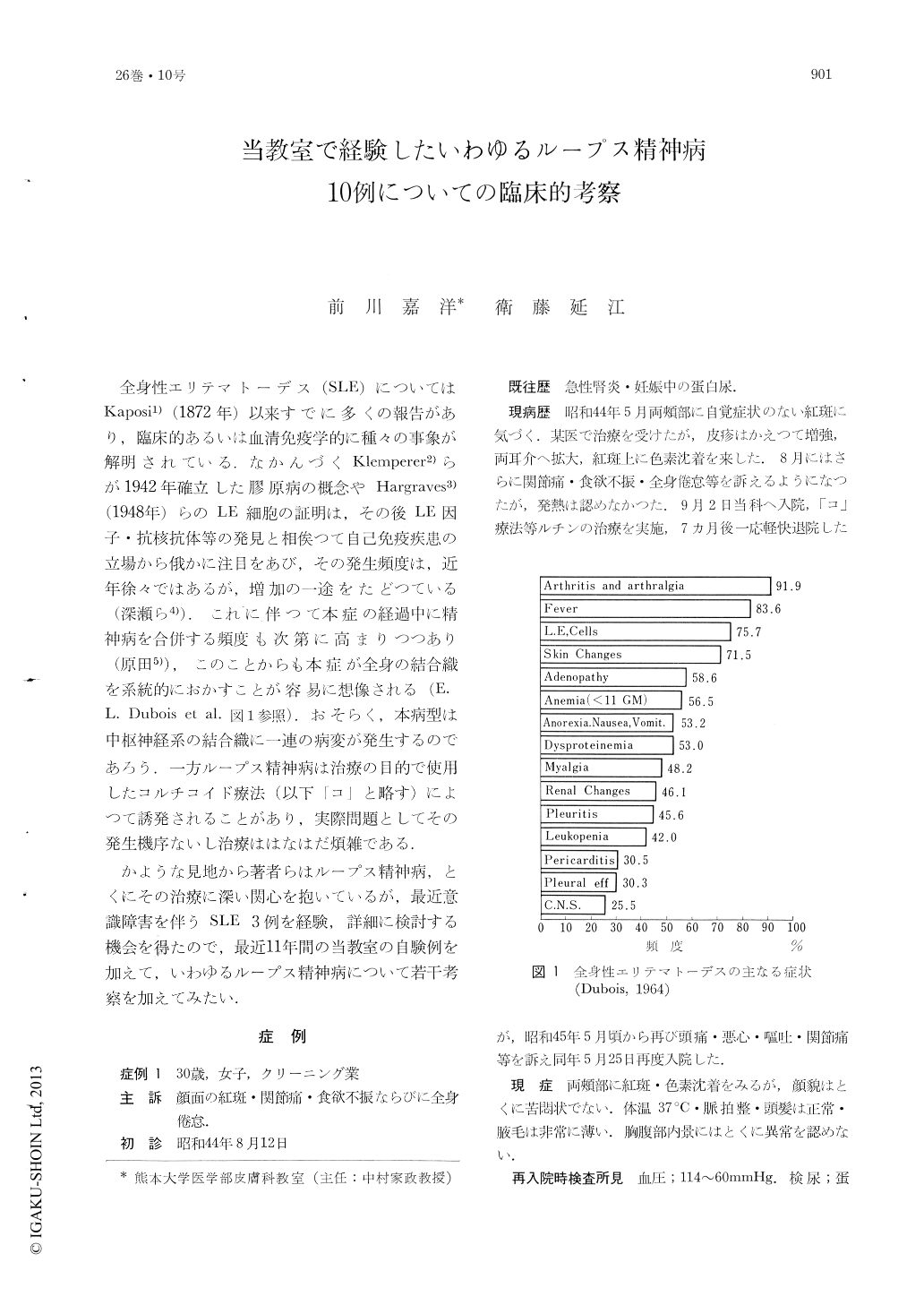Japanese
English
- 有料閲覧
- Abstract 文献概要
- 1ページ目 Look Inside
全身性エリテマトーデス(SLE)についてはKaposi1)(1872年)以来すでに多くの報告があり,臨床的あるいは血清免疫学的に種々の事象が解明されている.なかんづくKlemperer2)らが1942年確立した膠原病の概念やHargraves3)(1948年)らのLE細胞の証明は,その後LE因子・抗核抗体等の発見と相俟つて自己免疫疾患の立場から俄かに注目をあび,その発生頻度は,近年徐々ではあるが,増加の一途をたどつている(深瀬ら4)).これに伴つて本症の経過中に精神病を合併する頻度も次第に高まりつつあり(原田5)),このことからも本症が全身の結合織を系統的におかすことが容易に想像される(E.L.Dubois et al.図1参照).おそらく,本病型は中枢神経系の結合織に一連の病変が発生するのであろう.一方ループス精神病は治療の目的で使用したコルチコイド療法(以下「コ」と略す)によつて誘発されることがあり,実際問題としてその発生機序ないし治療ははなはだ煩雑である.
かような見地から著者らはループス精神病,とくにその治療に深い関心を抱いているが,最近意識障害を伴うSLE 3例を経験,詳細に検討する機会を得たので,最近11年間の当教室の自験例を加えて,いわゆるループス精神病について若干考察を加えてみたい.
Eighteen percent of 55 cases of the systemic lupus erythematosus in the Department of Dermatology, Kumamto University Hospital, for the recent 11 years have shown some psychopathic signs.
Differential diagnosis between this disease and the steroid-induced psychosis was most important. And the prognosis of the two diseases were different. The latter improved rapidly by the discontinua-tion of the corticosteroids followed by the administration of the sedatives such as chlorpromazine and control etc., while some cases of the former took the grave prognosis.

Copyright © 1972, Igaku-Shoin Ltd. All rights reserved.


